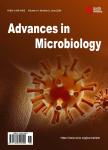Detection of blaNDM-1 and Genetic Relatedness in Clinical Isolates of Escherichia coli Producing Extended Spectrum β-Lactamase from Tertiary Care Centres in South India
Detection of blaNDM-1 and Genetic Relatedness in Clinical Isolates of Escherichia coli Producing Extended Spectrum β-Lactamase from Tertiary Care Centres in South India作者机构:Department of Biotechnology University of Calicut Malappuram India
出 版 物:《Advances in Microbiology》 (微生物学(英文))
年 卷 期:2016年第6卷第3期
页 面:125-132页
学科分类:100208[医学-临床检验诊断学] 1002[医学-临床医学] 10[医学]
主 题:ESBL blaNDM-1 Plasmids E. coli
摘 要:Background: Extended spectrum β-lactamases (ESBL) producing E. coli co-producing other β-lactamases and exhibiting co-resistance to different antibiotic classes continue to emerge as a threat to clinical field. This study aimed to analyze the co-production of New Delhi metallo-β-lactamase-1 (blaNDM-1) in ESBL producing plasmid-bearing clinical isolates collected from two tertiary care centres in Kerala, South India, and to understand their genetic relatedness. Methods: Antibiotic resistance phenotypes of 44 clinical isolates were determined by disc-diffusion method. Plasmid-bearing isolates, detected by the alkaline-lysis method, which also tested positive for ESBL production, were screened for the presence of blaNDM-1 by polymerase chain reaction. Plasmid, random amplified polymorphic DNA profiles and blaNDM-1 sequence-based phylogenetic tree were analyzed to understand the genotypic similarities among the isolates. Results: Beta-lactam antibiotics, quinolones, cephalosporins, used in this study, and AZM were found to be ineffective against the isolates as significantly high number of isolates were resistant to these antibiotics (P 0.01). Plasmid bearing isolates constituted 57% (n = 25), all of which were found to be ESBL producers. blaNDM-1 amplicons were noticed in four (16%) isolates and these DNA sequences showed homology between them and with similar sequences reported from other countries like Japan and Korea. Plasmid and RAPD profiles demonstrated that most of the isolates, including those harbouring blaNDM-1 shared genetic similarities as well as an apparent geographical distinctiveness. Conclusion: The predominance of ESBL production and the occurrence of blaNDM-1 in plasmid-bearing isolates observed in our study corroborate the worldwide drug-resistance scenario. This study thus warrants the need for constant surveillance in the face of sparse information available in Kerala State on the emerging drug resistance in clinical bacteria.



